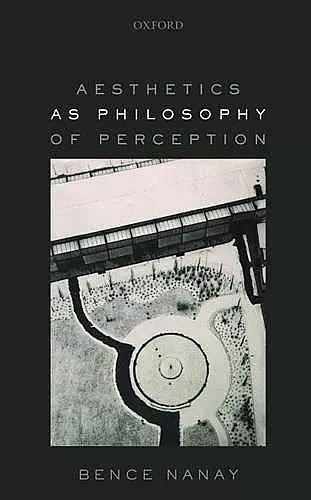Aesthetics as Philosophy of Perception
Format:Hardback
Publisher:Oxford University Press
Published:14th Jan '16
Currently unavailable, and unfortunately no date known when it will be back
This hardback is available in another edition too:
- Paperback£33.99(9780198811619)

Aesthetics is about some special and unusual ways of experiencing the world. Not just artworks, but also nature and ordinary objects. But then if we apply the remarkably elaborate and sophisticated conceptual apparatus of philosophy of perception to questions in aesthetics, we can make real progress. The aim of this book is to bring the discussion of aesthetics and perception together. Bence Nanay explores how many influential debates in aesthetics look very different, and may be easier to tackle, if we clarify the assumptions they make about perception and about experiences in general. The focus of Aesthetics as Philosophy of Perception is the concept of attention and the ways in which this concept and especially the distinction between distributed and focused attention can help us re-evaluate various key concepts and debates in aesthetics. Sometimes our attention is distributed in an unusual way: we are attending to one perceptual object but our attention is distributed across its various properties. This way of experiencing the world is special and it plays an important role in characterizing a number of phenomena associated with aesthetics. Some of these that the book talks about include picture perception and depiction, aesthetic experiences, formalism, the importance of uniqueness in aesthetics, and the history of vision debate. But sometimes, in some aesthetic contexts, our attention is not at all distributed, but very much focused. Nanay closes his argument with an analysis of some paradigmatic aesthetic phenomena where our attention is focused: identification and engagement with fictional characters. And the conflict and interplay between distributed and focused attention is an important feature of many artworks.
his thesis and concomitant notions are very interesting. Furthermore, he makes good use of his entire framework. Focused attention and distributed attention do seem involved in various aspects of aesthetic experiences. It would appear that the philosophy of perception can and should illuminate important features of aesthetic experience. I would recommend this book for both philosophers of perception and aestheticians-which is Nanay's intended audience. * Charles Macmillan Urban, Philosophy in Review *
A welcome scepticism about some topics in contemporary aesthetics motivates this project. * John Kulvicki, Times Literary Supplement *
the discussions are rich with examples drawn from both "high art" and "opular" media, never overused and always on point. This is not to suggest that the discussion is "overly accessible": it offers high-level discussion of technical issues in philosophical aesthetics and art theory, and no less so of issues in philosophy of and empirical studies on perception. For each separate topic or chapter, prior to offering his own critiques and positive analyses, Nanay offers a clear and engaging background story -- whether it is the conceptual history of formalism, philosophical theories about how we see pictures, or scientific evidence that suggests sensory perception is not functionally isolated from other mental processes. The book both invites and informs. * Dustin Stokes, Notre Dame Philosophical Reviews Online *
Bence Nanay provides an original and interesting discussion of the connections between aesthetics and the philosophy of perception. * Mette K. Hansen, Philosophical Quarterly *
ISBN: 9780199658442
Dimensions: 223mm x 148mm x 20mm
Weight: 404g
228 pages